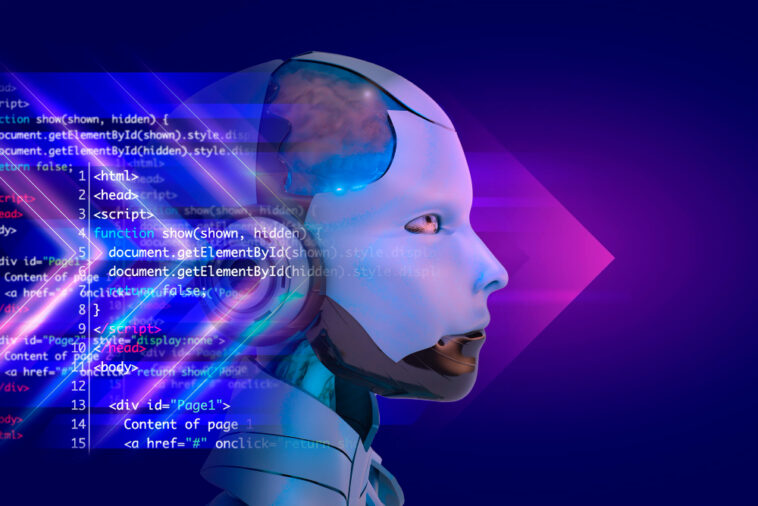Introduction
Did you know that the global edge AI market size was valued at 20.45 billion in 2023 and is expected to reach USD 27.01 billion in 2024 to USD 269.82 billion by 2032? This growth reflects a robust Compound Annual Growth Rate (CAGR) of 33.3%. But what is driving this fast pace of growth? Let’s break it down for you.
Edge AI combines edge computing and artificial intelligence, where the AI and ML models run on the edge devices at the endpoint of a network rather than in the cloud.
This integration is opening a new wave of applications, solving major challenges of cloud-based AI, including latency, high bandwidth costs, and privacy issues related to transferring big data to central cloud servers.
By processing data locally with minimal delay, edge AI facilitates real-time decision-making, ideal for applications demanding instant responses.
In this blog, we will discuss what edge AI is and the future edge technology in the AI application area.
What is Edge AI?
Edge AI allows you to use artificial intelligence technology in an edge computing environment. The integration enables various evaluations to take place where the data is actually collected rather than sending it to an offsite data center.
Simply put, the technology allows the devices to make quick and intelligent judgments without being linked to the net. Most crucially, it brings data storage closer to the device itself.
Now that you have an overview of what Edge AI is all about, let’s discuss the importance of it in terms of Next-Gen AI applications.
Importance of Edge AI
Edge AI is revolutionizing how data is processed and utilized, offering transformative benefits that enhance speed, security, and efficiency across various industries. According to recent stats, 74% of business owners are saying that implementing generative AI in their business has transformed the way they operate.
- Scalability
Edge AI is expandable, allowing enterprises to add AI capabilities as needed. Unlike centralized AI systems, which may require major modifications to handle more data or processing, edge AI can extend horizontally by adding edge devices. This allows seamless integration of additional devices into existing infrastructure, guaranteeing cost-effective scaling without compromising performance or reliability.
- Enhanced Data Security
Edge AI helps protect data by processing sensitive information locally on devices, decreasing the danger of exposure or assaults during transmission to cloud servers. This method keeps vital data on the device, preventing illegal access, data breach, or interception.
- Less Bandwidth Usage
Edge AI processes data on devices available locally, decreasing cloud data analysis bandwidth. This optimizes network bandwidth, lowers data transfer costs, and reduces network congestion, especially in low-bandwidth scenarios.
- Real-time Performance
Edge AI allows high-performance computing on local devices for data processing, immediate analysis, and Machine Learning and Deep Learning algorithms. Edge data processing takes milliseconds, making it perfect for real-time applications like production line defect detection and security system aberrant behavior detection.
- Improved Privacy
AI operations process most data locally rather than sending it to faraway cloud servers, reducing data mishandling. Security, IP, and other sensitive data require privacy, which improves.
- Fewer Data Transfers
Edge AI reduces cloud data by processing it locally. This efficiency minimizes data transmission costs and network bandwidth pressure, allowing organizations to focus on evaluating key findings instead of managing unnecessary data flows.
How Does Edge AI Work?
Edge AI merges artificial intelligence with edge computing to allow data processing locally on devices at the network edge. This new approach revolutionizes how organizations manage data because real analysis can now occur nearer to the source rather than in a central cloud.
The process starts with data acquisition, where smart devices such as sensors, cameras, IoT items, etc., capture raw data from the environment. This data can include video feeds in security systems, environmental data in smart agriculture, and so on. If such information goes through local processing, edge devices are capable of working independently and do not require constant interaction with central systems.
Once data is collected, it is processed locally by machine learning models embedded in the edge devices. This allows instantaneous decision-making with little delay, perfect for automotive systems and robotics, to name but a few examples. Also, local processing reduces the amount of data transmitted to the cloud because only summaries or conclusions are sent. This not only saves bandwidth but also increases operational capacity.
Further, Edge AI systems can learn from the new data set and enhance the algorithms from time to time. Even though they are mostly deployed at the edge, they can connect to cloud solutions for analytics and data storage where needed. Edge AI generally enables organizations to optimize performance, respond quickly to important occurrences, and guarantee data protection by processing data at the edge.
Next-Gen Applications Powered by Edge AI
Edge AI is driving the development of next-generation applications across various industries, revolutionizing how we interact with technology and enhancing efficiency.
Here are some notable use cases:
- Smart AI Vision
Some edge AI use cases include live video analytics, which drives computer vision across sectors. Intel developed unique Visual Processing unit chips to deliver computer vision applications to edge devices.
- Smart Energy
In the energy sector, edge AI constantly analyzes data to manage energy distribution and usage. Smart grids with edge AI can forecast energy demand, optimize resource usage, and incorporate renewable energy sources. This results in lower operational expenses and higher business sustainability.
- AI Healthcare
AI healthcare applications, including robotic surgery, diagnostics, and monitoring of vital signs, require edge AI. Surgery can be performed through a remote platform, and doctors can maneuver the instruments from a distance that makes them feel secure.
- Entertainment
Edge AI is revolutionizing the entertainment industry because it can deliver content based on the user’s preferences and provide better experiences. Streaming platforms rely on edge AI to analyze viewers’ preferences and offer content suggestions on the fly. This not only enhances the users’ experience but also increases the rate of content delivery.
- Smart Transport Systems
Drivers can exchange or obtain information from traffic information centers to evade such vehicles or those that suddenly stop. Real-time performance can be useful in preventing an accident from happening. Also, a self-driving car can perceive its environment and navigate without causing an accident.
- Smart Cities and IoT
Smart cities are one application area that highly depends on edge AI to process the data of interconnected IoT devices. This helps in traffic control, waste management, and other public issues such as crime control and prevention, among others. Real-time processing of data from multiple sources can help cities manage resources better, improve services to citizens, and cut expenses.
Future of Edge AI
The future of Edge AI seems promising since most brands are planning to use the technology. In addition, the technology will offer many dynamic opportunities in various fields as processors have become powerful and have enhanced network access.
Leveraging Edge AI is easier for companies when the infrastructure for machine learning and IoT applications is on the rise. In addition to real-time information, the technology can enhance privacy. You can opt for the AI Consulting services & solutions for clients to strategize, scale & strengthen capabilities reimagining experiences for people.
In the future, edge AI technology may require vendors, which may add new levels of complexity. The technology is vulnerable to sustainability problems now and again.
Conclusion
As we’ve explored, Edge AI is not just a technological advancement; it’s a transformative force reshaping various industries by enabling real-time data processing, enhancing efficiency, and improving user experiences. From smart cities and healthcare to entertainment and intelligent transportation systems, the applications of Edge AI are vast and varied, driving innovation and paving the way for the future.



